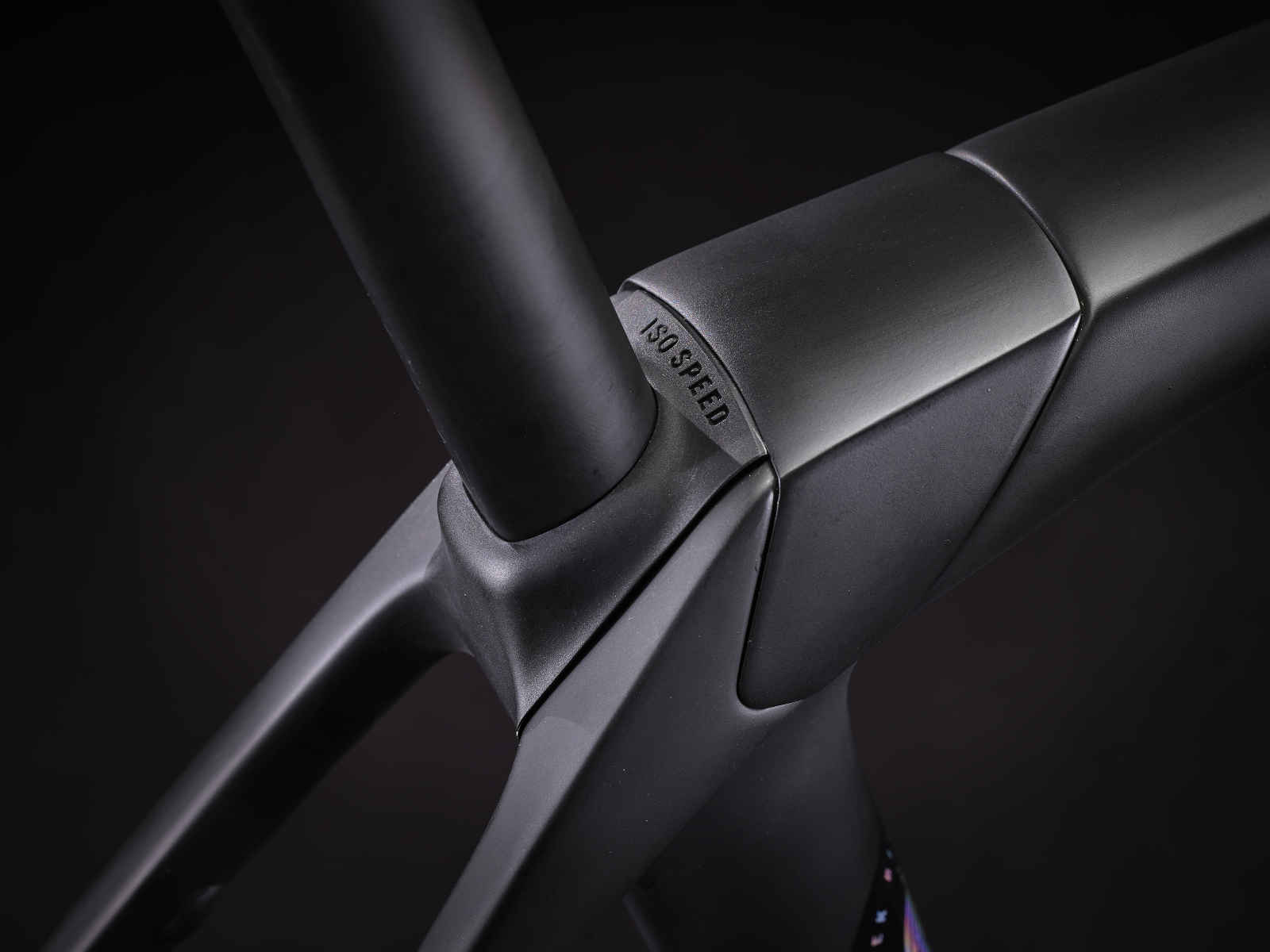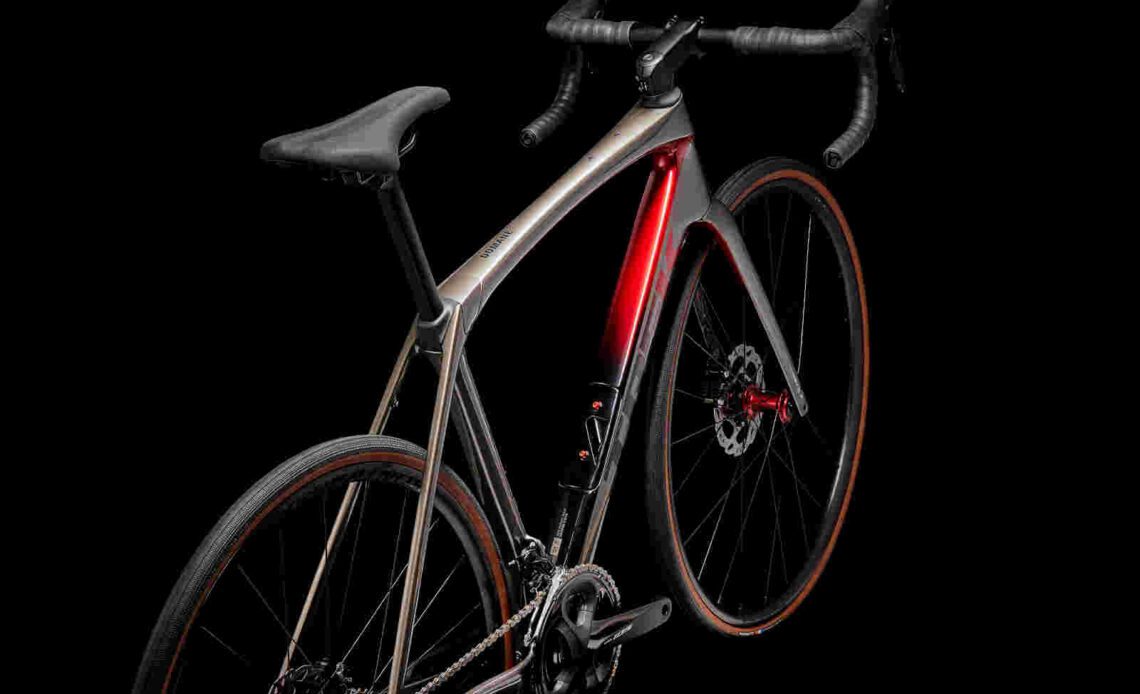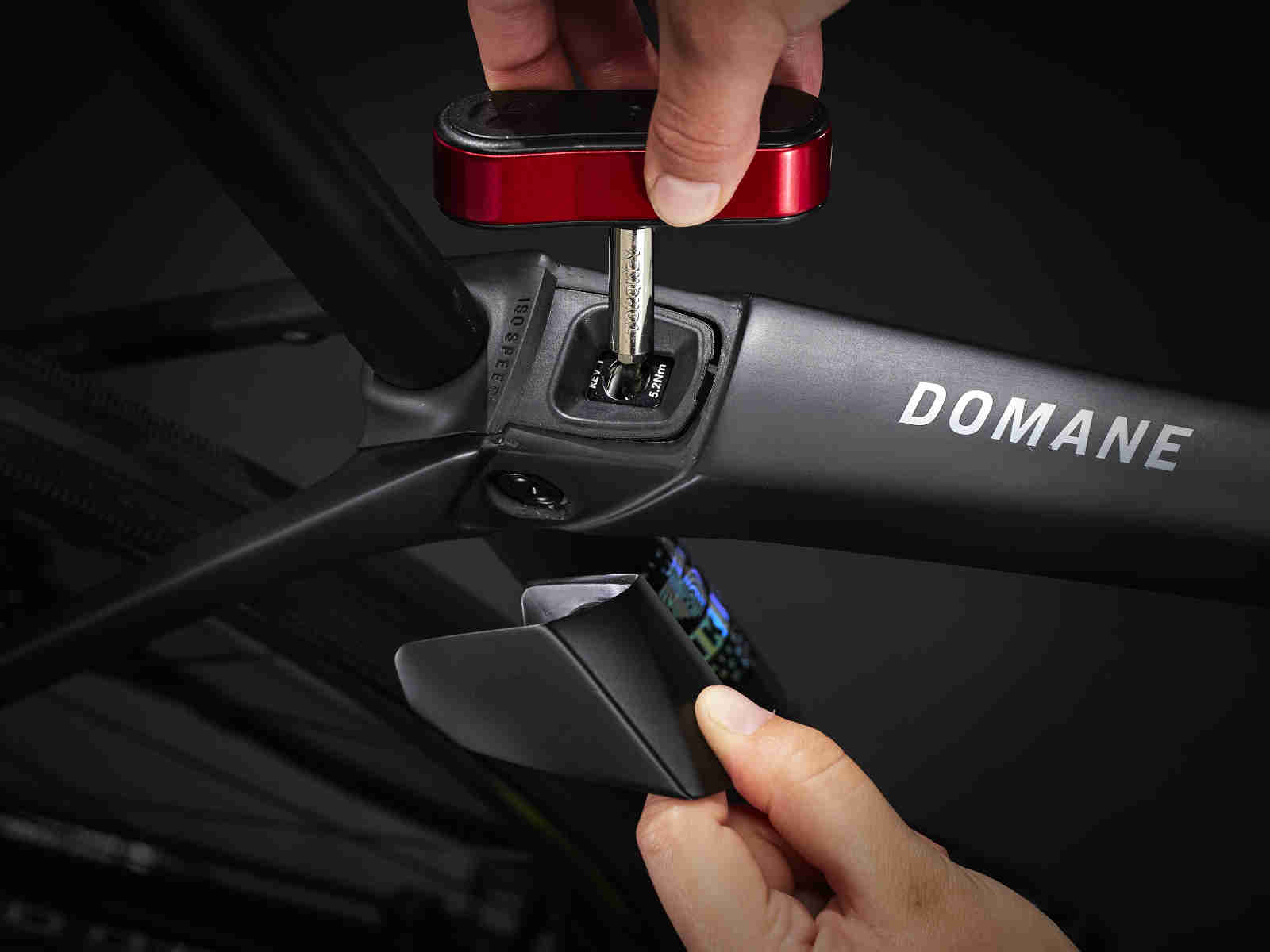Trek has launched its fourth generation Domane SL and SLR. The newest version of the ride is aimed at the high performance-minded racer, but also comes with the ability to be used on adventures outside of the peloton. As well as the SL and SLR, the Domane will also come in a pure racer–oriented version, the RSL. This frame has been tested by the Trek-Segafredo team at the WorldTour level in Europe. It’s seen a win at Paris-Roubaix by Italian pro Elisa Longo Borghini. There’s been a number of changes to the Domane: the IsoSpeed system is different; there’s been a decrease in weight; and the cockpit has been improved. Riders also have the ability to add peripherals for epic all-day rides.
Refined IsoSpeed for better comfort
One of the big improvements with the new Domane is the upgrade to its IsoSpeed tech. The system that reduces vibrations from the road to decrease fatigue is lighter on the fourth-generation Domane. As opposed to earlier versions, the new IsoSpeed is non-adjustable, as Trek engineers found that most riders would set their levels of damping and then forget them. The new Domane has also removed the IsoSpeed from the front end, which also contributes to its reduced weight.

“The gen four, rear-only system is non-adjustable, which means we’ve simplified the design and removed complexity and maintenance,” Reggie Lund, Trek’s lead engineer on the new Domane, says. “But we’ve maintained the ride quality and compliance but decreased some weight.”
The new Domane also has a seatpost clamp integrated into the top tube, creating a much cleaner look. The seatmast of the gen-three bike is gonie. The new seatpost is D-shaped for additional aero gains, and available in 280-mm and 320-mm lengths.
The three frames: RSL, SL and SLR
All three members of the new Domane family have similar aero benefits. The SL and SLR are identical when it comes to frame shapes and features.The difference lies in the carbon material used. The SL uses OCLV 500, and the SLR uses the higher-quality OCLV 800. Both rides will have upgrades in the tube department, using truncated airfoil shapes, making it the fastest Domane yet.
Weight-wise, all frames are quite a bit lighter. The SLR shaves 700 g, and the SL 300 g. Both of the frames use a more relaxed endurance geometry compared with the H1.5 design on both the Émonda and Madone. With a higher top tube and extended wheelbase, the SLR and SL aim to provide enhanced comfort for longer rides. The RSL,…
Click Here to Read the Full Original Article at Canadian Cycling Magazine…



